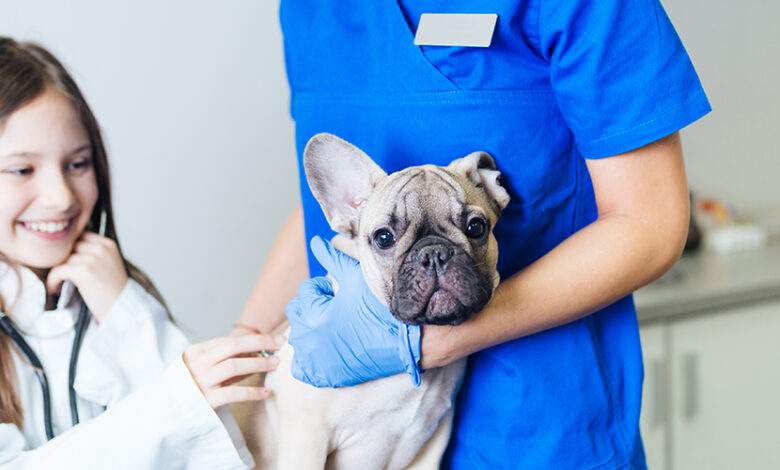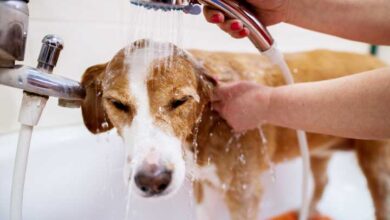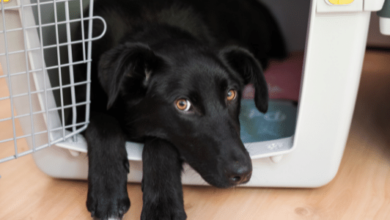The Ultimate Guide to Pet Insurance

Choosing the Right Pet Insurance Plan
Factors to Consider
When selecting a pet insurance plan, consider the following factors:
- Pet’s Age: Some insurance providers have age restrictions for coverage, so consider your pet’s age when choosing a plan.
- Breed: Certain breeds may be more susceptible to specific health issues, so research breed-specific considerations.
- Coverage Limits: Be aware of any annual or lifetime coverage limits imposed by the insurance plan.
- Deductibles: Understand the deductible amount you’ll need to pay before insurance coverage kicks in.
- Premiums: Consider the monthly or annual premium costs and how they fit into your budget.
- Exclusions: Review the policy’s exclusions to understand what is not covered.
- Waiting Periods: Be aware of any waiting periods before your coverage becomes active.
Pet insurance is a financial product designed to help pet owners cover the cost of veterinary care for their furry, feathered, or scaly companions. Just like health insurance for humans, pet insurance plans come in various forms and offer different levels of coverage. These plans can help mitigate the financial burden of unexpected veterinary bills, ensuring that you can provide the best possible care for your pet without worrying about the cost.
Types of Pet Insurance
Accident-Only Coverage
Accident-only pet insurance covers injuries resulting from accidents, such as car accidents, falls, or ingesting harmful substances. This type of coverage is typically more affordable than comprehensive plans and is a good choice for pet owners primarily concerned with accidents.
Illness Coverage
Illness coverage extends to medical conditions and diseases that are not the result of an accident. It covers a broad range of health issues, including infections, allergies, cancer, and chronic conditions like diabetes. This type of coverage offers more comprehensive protection than accident-only plans.
Comprehensive Coverage
Comprehensive pet insurance combines accident and illness coverage, providing the most extensive protection for your pet. It covers both unexpected accidents and illnesses, making it the ideal choice for pet owners who want full peace of mind.
Benefits of Pet Insurance
Financial Protection
One of the most significant benefits of pet insurance is the financial protection it offers. Instead of worrying about the cost of treatment, you can focus on your pet’s recovery. Insurance helps you budget for routine and unexpected veterinary expenses by spreading the cost over time.
Access to Quality Veterinary Care
With pet insurance, you have the freedom to seek the best veterinary care available without being limited by cost. You can consult with specialists, undergo diagnostic tests, and opt for advanced treatments, all of which contribute to better outcomes for your pet.
Peace of Mind
Pet insurance provides peace of mind, knowing that you’re prepared for the unexpected. You won’t have to make difficult decisions about your pet’s health based on financial constraints. Instead, you can make choices solely based on what’s best for your furry friend.
Coverage for Various Situations
Pet insurance plans can cover a wide range of situations, including accidents, illnesses, surgeries, hospitalization, prescription medications, and even preventive care like vaccinations and dental cleanings. Depending on your chosen plan, you can tailor coverage to suit your pet’s needs.
Comparing Different Plans
To find the right pet insurance plan, it’s essential to compare options from various providers. Look for plans that offer the coverage you need at a price you can afford. Additionally, read customer reviews and seek recommendations from other pet owners.
Customizing Coverage
Many pet insurance providers offer the flexibility to customize your coverage based on your pet’s specific needs. Consider adding optional coverage for routine wellness care, dental care, or alternative therapies if they align with your pet’s health requirements.
How to Use Pet Insurance
Filing a Claim
When your pet receives veterinary care, ensure you obtain detailed invoices and medical records. Then, contact your insurance provider to initiate the claims process. Most insurers allow you to submit claims online, via email, or by mail. Include all relevant documentation to support your claim.
Reimbursement Process
After submitting a claim, your insurance provider will review it to determine eligibility. Once approved, you’ll receive a reimbursement check or direct deposit for the covered expenses. The reimbursement amount depends on your plan’s coverage and reimbursement percentage.
Finding a Participating Veterinarian
While many pet insurance plans allow you to visit any licensed veterinarian, some offer networks of participating providers. Choosing a participating veterinarian can simplify the claims process, as the clinic may directly bill the insurance company for eligible expenses.



